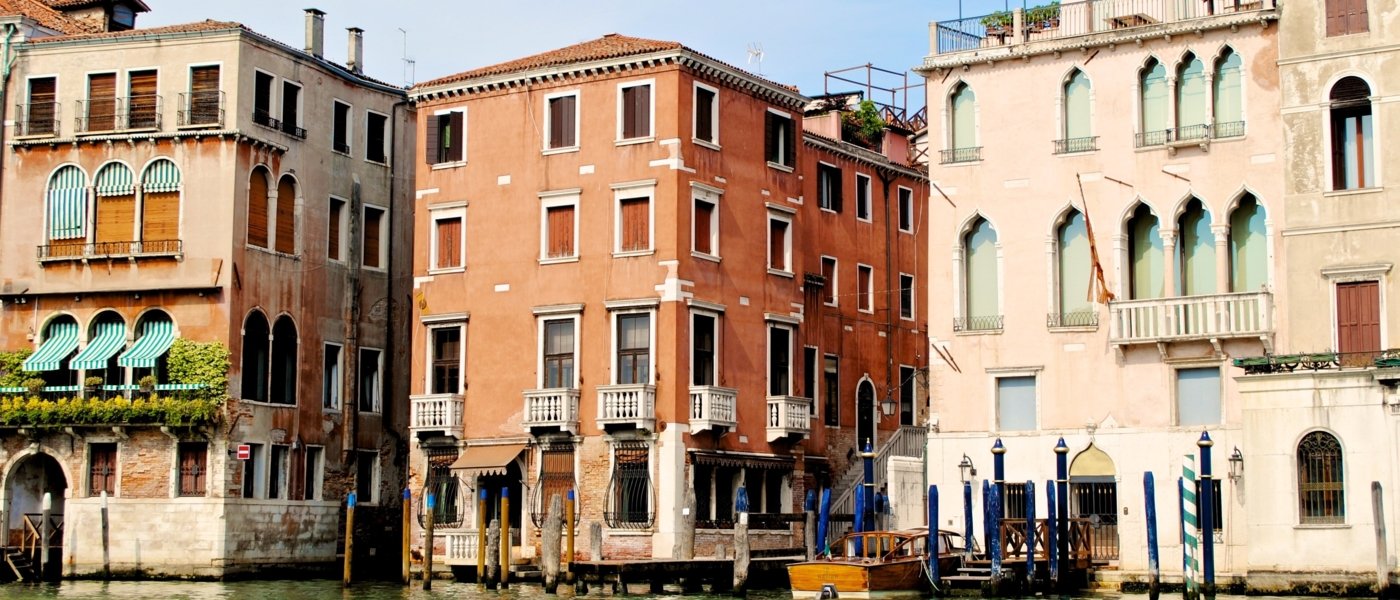Venice, the city of sea-faring merchants, is capital of the Veneto, a region in the north-east of Italy with the Alps to the north, Lake Garda to the west and the Adriatic to the east. The region is blessed with a benign climate: the cold air flowing down from the Alps, tempered by warm air from the Adriatic and Lake Garda’s microclimate ensure ideal conditions for grape growing, allowing full flavours to develop and acidity to be maintained in the grapes. A wide range of wines, white, rosé, red, sparkling and sweet are produced within a stone’s throw of Venice.
Wineries in the Veneto are a mix of artisan and industrial producers; indeed it is home to some of the largest commercial producers in Italy, yet there are still many family-run, boutique wineries near Venice, Italy.
Veneto’s Prosecco has now become the world’s favourite sparkler, overtaking global Champagne sales a few years ago and is an entrancing spot to visit wineries near Venice. Italy also loves the dry, fruity, aromatic Prosecco, produced from the Glera grape, and consumes it by the tanker-load throughout Venice, as an aperitif or a cocktail, mixed with Aperol and soda as Spritz or with fresh peach juice as a Bellini. A day trip to the rolling vine-clad hills of the Conegliano Valdobbiadene DOCG will allow you to appreciate the best Prosseco amidst picturesque scenery.
The volcanic terroir of Soave is home to one of the most famous white wines in Italy. Soave Superiore and Soave Superiore Classico are produced principally from the Garganega grape variety. Although Soave has gained a bad reputation through expansion of its original classico zone, overproduction and the relaxing of the DOCG rules to include Trebbiano Toscano and Chardonnay (the original recipe was Garganega and the more aromatic Trebbiano di Soave), many producers are returning to their roots and crafting aromatic and weighty versions of the supermarket favourite. The classico region with its limestone soils produces fruitier wines, whereas the eastern vineyards near Monteforte d’Alpone with their soils of decomposed volcanic rock give wines with more mineral notes. Some say that, based on its terroir with poor, well-drained soils based on calcareous clay, Soave should be the Chablis of Italy.
For another trip out of Venice, wineries producing the definitive red wine of the Veneto are also found in Valpolicella. The region, often described as an open hand, with fingers starting in the Monte Lessini range north of Verona and spreading southward, a series of long vine-covered ridges accompanied by mountain streams. The name means valley of many cellars. Valpolicella produces light fruity red wines principally from the Corvina, Corvinone, Rondinella and Molinara varieties, although other local and international varieties may be included in the blend. Valpolicella is also home to the weighty velvety Amarone della Valpolicella, produced using a similar blend of grapes, which are dried on ‘graticci’, straw mats, in open lofts until January, during which time they lose 30-40% of their weight. They are then pressed and vinified, yielding a dense, velvety, alcoholic wine with flavours of tar and spice. It is said to have been discovered by accident, when a barrel of Recioto della Valpolicella, the sweet wine produced from air-dried grapes, was left unattended and the wine fermented until dry. Amarone was first commercialised in the fifties and has since become one of Italy’s iconic wines.
At Wine Paths, our team of local experts can arrange the finer details of exclusive visits to some of the best wineries near Venice, Italy.
If you're interested in one of our Veneto Wine Tours, please visit this link.






